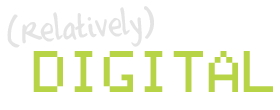 The question of building knowledge in this industry has arisen more frequently recently, mainly as a result of expanding markets in particular areas such as digital and interactive and also as a result of the economic downturn when many people are let go or changing positions and organisations must fight hard to transfer and retain the knowledge of their clients, brands and businesses. Knowledge management itself has been around for a while, particularly in the R&D departments of product and software development organisations. I personally worked with the HP inkjet team on a pilot KM project in their Barcelona campus back in 2003.
The question of building knowledge in this industry has arisen more frequently recently, mainly as a result of expanding markets in particular areas such as digital and interactive and also as a result of the economic downturn when many people are let go or changing positions and organisations must fight hard to transfer and retain the knowledge of their clients, brands and businesses. Knowledge management itself has been around for a while, particularly in the R&D departments of product and software development organisations. I personally worked with the HP inkjet team on a pilot KM project in their Barcelona campus back in 2003.
Knowledge is defined by the Oxford English Dictionary as (i) expertise, and skills acquired by a person through experience or education; the theoretical or practical understanding of a subject; (ii) what is known in a particular field or in total; facts and information; or (iii) awareness or familiarity gained by experience of a fact or situation. Philosophical debates in general start with Plato’s formulation of knowledge as “justified true belief.” There is however no single agreed definition of knowledge presently, nor any prospect of one, and there remain numerous competing theories. Knowledge acquisition involves complex cognitive processes: perception, learning, communication, association and reasoning. The term knowledge is also used to mean the confident understanding of a subject with the ability to use it for a specific purpose if appropriate. See knowledge management for additional details on that discipline. (from Wikipedia)
But what is knowledge in the agency business? It is a combination of all the information that we ingest, how it is put into practice in the business at large and also the corresponding results of each activity. For example this could be the use of new media for example email or bluetooth transmission as part of a direct/acquisition campaign, so the information component is that these technologies exist, how they work and their limitations in terms of creative and messaging; the application of this might be our use of sending food recipes via bluetooth through a transmission device in a mall or supermarket; and finally the results of how well this worked with different messages and different locations.
So we can break down the knowledge into three discreet pieces, the first is availability and access to information, the second is how it works and is applied, and the third the usefulness or success of a specific operation. We can therefore then look at each of these in turn and understand in what format the content is available, the best way to parse it to employees so that they in turn can ingest, digest, apply and most importantly create more knowledge for the learning of the organisation to continue. Each step of course making use of different tools to optimise the effectiveness and results.
1. Access to information
Information in the advertising and marcomms industry comes at us from a massive variety of different sources: magazines, blogs, conferences, TV shows, suppliers, the list is endless, so with such a large amount of information available we need to harness the power of our networks to filter and highlight relevant items. We do this in a certain sense when we look at the wall of shared items on Facebook: these are elements shared by people in our social circle, hence people we trust so give us information, but this may be a little broad depending on the industry sector of your high school buddies or your aunt. Another approach is to subscribe to blogs and magazines that focus on our industry as they give a focussed look at out particular areas of interest, again with the downfall that the information might be slow to get to us through printing and distribution or limited in it’s reach since a blog is very focussed. LinkedIn is currently beta testing a new product called Signal, which combines the power of both of the above with strong filtering options to help you get to the relevant information, and following Facebook’s announcements last night they will soon be doing the same in terms of grouping different types of feeds together.
So then how do we harness this at an agency level and with what tools? At Leo Burnett in Dubai we have accepted that the majority of information is now online before it ever reaches a paper format, and therefore we have focussed on how to aggregate it and distribute it to employees via the tools they are using (mostly email/Outlook and the web), this is currently in place using a Twitter list to collate the sources deemed as ‘relevant’ and these are distributed by both a Twitter feed on our intranet page, and via the SmallRivers service at www.paper.li/LeoBurnettMENA. But these solutions are still not ideal, one because the actual information collected is only based on the opinions of a small group or one-off surveys, and also because we have not managed to get the content directly into email, it is still always one click away. To supplement the above the agency also sporadically uses a distribution list system to share interesting information across all (or a subset) of employees, but there is little uptake by the masses (items are always shared by a small group – Pareto at work).
We need to take this information to the next level – an application whereby both the content is better integrated into ‘normal’ activity and more people are contributing to it on a realtime basis, this is potentially through the use of RSS feeds integrated into Microsoft Outlook, which can then be highlighted as unread when they come in. We were one step away from this until the launch of the ‘new twitter’ where they have for the moment removed the ability to syndicate content through an RSS feed. Research is still ongoing…
2. Functionality & application
The second step in information is what could be termed the ‘deep dive’, this is when we need to really to understand the details of a product or service to start to understand how it works and therefore how it can help us or our clients. Again we can handle this on two levels, both active and passive: The active level is creating the curiosity within an individual to seek out this information and drive themselves to the understanding, the majority of the time this is through an example of an application or an experience with the product itself – the more users we have on Twitter, the better they understand it, assimilate it and understand how it can be reapplied. The passive approach is to bring people the information and we do this by inviting speakers and suppliers to share their thoughts with us (commonly known in the community as lunch-and-learn); the issue here is timing and attendance and whether the organisation invests to pay a speaker or users a supplier whose discourse may be more commercial than didactic. Creating the curiosity within an individual to seek out this information and drive themselves to the understanding is the biggest challenge we have. But the solution requires a combination of opportunity to practice as well as having a culture of deep curiosity (not just at a shallow level)…
3. Results
Finally, getting hold of results in case studies is the key to showing the full use of information and knowledge. This tends to be very proprietary information and heavily guarded within organisations, and where IT knowledge management tools come into their own. At Leo Burnett, the notepad is the global KM platform with different levels of uptake around the world, at ex-RMG Connect it was ThePool and at Ogilvy, Truffles is an excellent resource, whilst at FullSIX I put in place the basics for a case-study database driven system called the HyperMarketing Lab. The issues with these systems are the ease of use both to contribute and benefit, they succeed well when knowledge managers in each local office are put in place to train users and drive content.
How do you manage knowledge in your organisation and with what tools?

